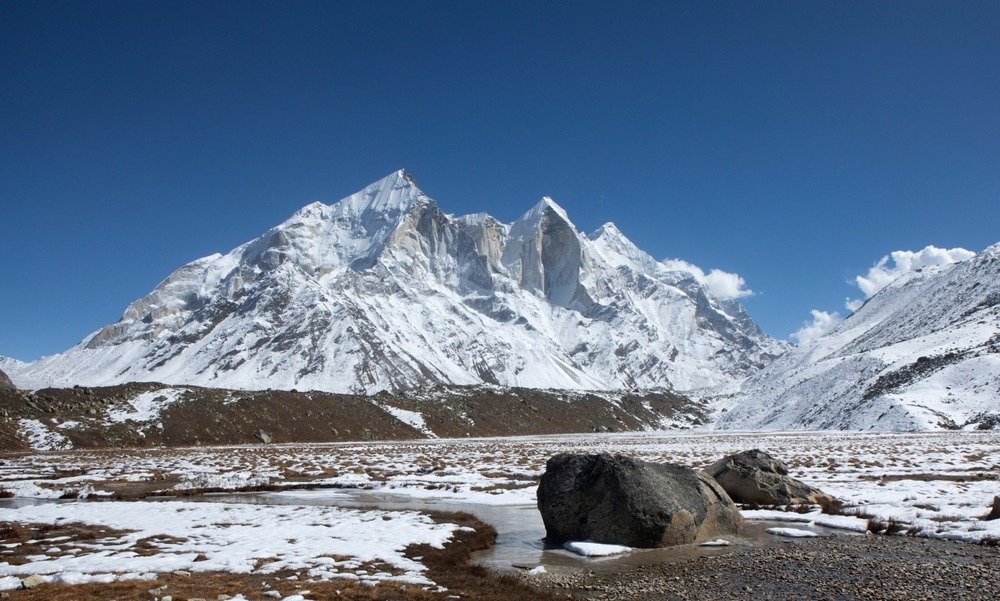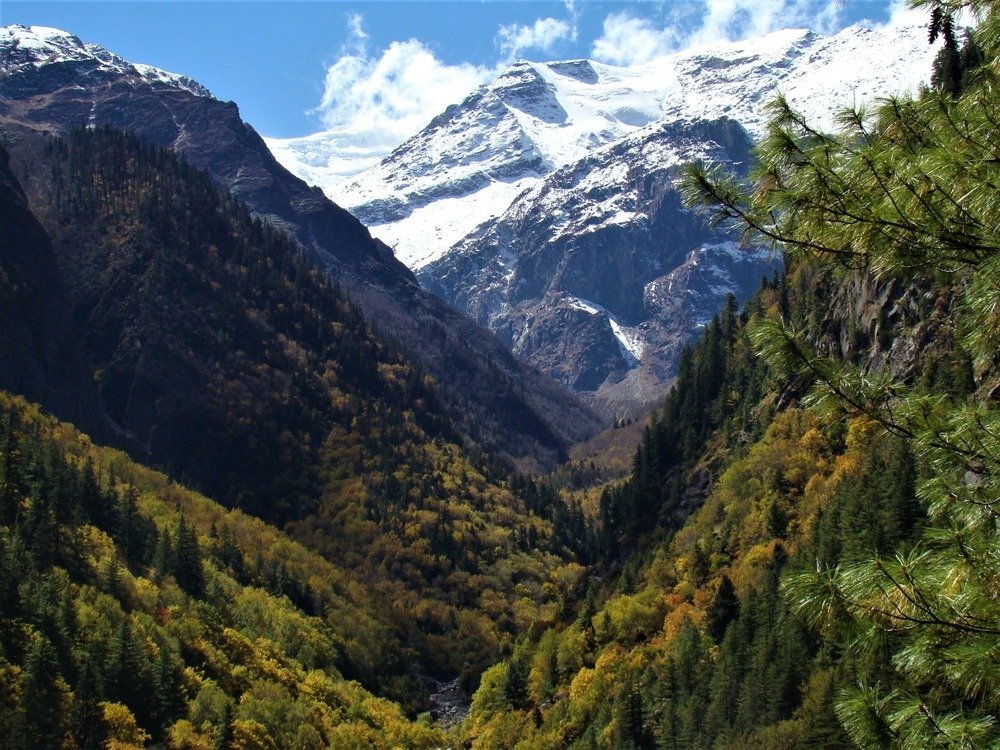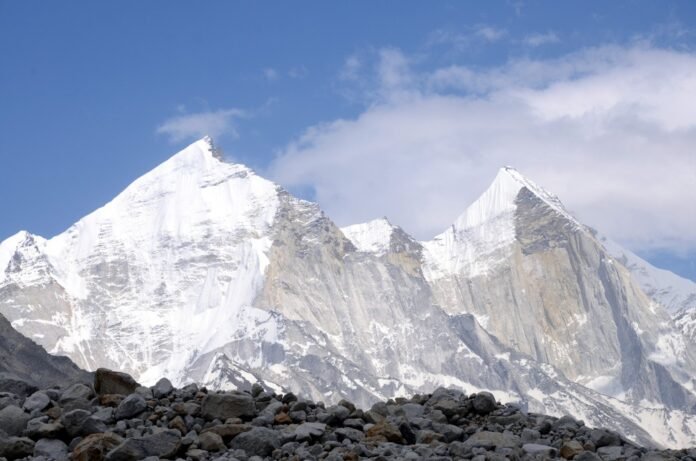Introduction: Embarking on a Himalayan Adventure
Hey there, fellow adventure seeker! If you’re dreaming of a trek that combines stunning landscapes with a touch of spiritual magic, the Gaumukh Glacier Trek is calling your name. Nestled in the majestic Himalayas, this trek offers not just a challenge but a deep dive into the natural beauty and serenity of one of India’s most revered glacial regions. Let me walk you through everything you need to know about this unforgettable journey.
What is the Gaumukh Glacier? Unveiling the Ice Jewel

So, what exactly is the Gaumukh Glacier? Located in the Garhwal Himalayas, this glacier is the source of the Bhagirathi River, one of the major tributaries of the Ganges. Imagine standing at the edge of a glacier that feeds one of the holiest rivers in India—it’s as epic as it sounds! The glacier is a monument to the untainted beauty and strength of nature, with its enormous ice fields and untamed landscape. The name “Gaumukh” translates to “Mouth of the Cow” in Hindi, referencing the glacier’s cow-like snout shape.
The Trekking Experience: More Than Just a Hike
Let’s talk about the trek itself. The Gaumukh Glacier Trek is a thrilling adventure that usually spans about 4 to 5 days. With a moderate to strenuous difficulty level, it’s perfect for those who are ready to push their limits and experience the Himalayas up close. Along the way, you’ll encounter pristine meadows, ancient forests, and, of course, the stunning glacier. Each day offers a new adventure: from crossing rivers to navigating rocky paths, every moment is an opportunity to connect with nature.
Beginning in the charming town of Uttarkashi, the journey progressively climbs towards the glacier. You’ll traverse through the picturesque villages of Bhojwasa and Tapovan, where you can soak in the tranquil environment and perhaps spot a few mountain goats or blue sheep.
Best Time to Trek: Timing is Everything
When’s the best time to hit the trails? If you want to catch the trek at its most vibrant, plan your adventure between May and June or September and October. These are the best months to go trekking because of the generally nice weather, which includes clear skies and comfortable temperatures. The summer months of May and June offer warmer weather and clearer views, while September and October provide a cooler climate with fewer trekkers, giving you a more peaceful experience. For an unforgettable Gaumukh Glacier Trek, look no further than The Searching Souls. Their expert guides, personalized itineraries, and commitment to safety ensure a seamless and exhilarating adventure. Experience breathtaking landscapes and unparalleled service with a company that truly cares about every detail of your journey.
However, keep in mind that the trek can be challenging during the monsoon season (July to August) due to heavy rains and slippery trails. Similarly, winter (November to April) can be harsh with snow and freezing temperatures, which could make the trek difficult and potentially dangerous.
How to Reach the Starting Point: Getting There
Now, let’s talk logistics. To begin the Gaumukh Glacier Trek, you’ll first need to get to Uttarkashi, a small town in Uttarakhand. The easiest way to reach Uttarkashi is by flying into Dehradun’s Jolly Grant Airport, which is about 200 kilometers away. You can take a bus or rent a taxi to get to Uttarkashi from Dehradun.
Alternatively, if you’re traveling by train, you can take a train to Dehradun Railway Station and then proceed by road. The scenic drive from Dehradun to Uttarkashi is an adventure in itself, with winding roads and breathtaking views of the Himalayas.
Preparation and Gear: Ready, Set, Trek

Preparation is key for any trek, and the Gaumukh Glacier Trek is no exception. Make sure you have the appropriate equipment first. Essential items include sturdy trekking boots, warm clothing, a reliable sleeping bag, and trekking poles. Remember to include essentials like sunscreen, sunglasses, and a water bottle in your well-made bag.
Fitness is crucial, too. The trek involves high altitudes and varying terrains, so it’s a good idea to train in advance. Focus on cardio exercises, hiking, and strength training to build endurance and prepare your body for the trek. Acclimatization is also important—spend a day or two in Uttarkashi to adjust to the altitude before starting the trek.
Day-by-Day Itinerary: Your Trekking Journey
Let’s break down what you can expect each day:
- Day 1: Arrival and Acclimatization
Arrive in Uttarkashi and spend the day exploring the town. Visit local temples and markets, and prepare your gear for the trek. Use this time to acclimatize to the altitude. - Day 2: Trek to Bhojwasa
Begin your trek from Uttarkashi to Bhojwasa, a picturesque meadow with stunning views. The trail takes you through lush forests and along the Bhagirathi River. You’ll spend the night in a tented camp in Bhojwasa. - Day 3: Gaumukh and Tapovan Exploration
Today is the highlight of the trek. Hike to the Gaumukh Glacier, taking in the breathtaking ice formations. From there, continue to Tapovan, a high-altitude plateau known for its expansive views and spiritual significance. Return to Bhojwasa for the night. - Day 4: Return to Uttarkashi
Trek back to Uttarkashi, retracing your steps. Enjoy the descent as you pass through the same beautiful landscapes you saw on the way up. Celebrate your trek with a well-deserved meal in Uttarkashi.
Regulations and Permits: What You Should Know
Before you set off, make sure you have all the necessary permits. The Gaumukh Glacier Trek is part of the Gangotri National Park, so you’ll need to obtain a permit from the Forest Department in Uttarkashi. This permit helps protect the area’s natural beauty and ensures a safe trekking experience.
Additionally, it’s essential to follow environmental regulations. Respect local wildlife, avoid littering, and adhere to the “Leave No Trace” principles to help preserve the pristine environment for future trekkers.
Safety Tips and Guidelines: Trek Smart
Safety should be your top priority. Trekking at high altitudes can lead to altitude sickness, so be mindful of symptoms like headaches, dizziness, and nausea. If you experience these, take a break and descend to a lower altitude if necessary. It’s also a good idea to trek with a guide or in a group for added safety.
Own a basic first aid kit and be familiar with its usage. Stay hydrated, eat well, and dress in layers to manage the changing temperatures. And, of course, always inform someone about your trek plans before setting out.
Accommodation and Food: Comfort in the Wild
While the trek is rugged, accommodation is relatively comfortable. In Bhojwasa and other stops, you’ll stay in tented camps that provide basic amenities. These camps offer a chance to rest and enjoy hearty meals prepared by local cooks. Expect simple yet nourishing food, including dal, rice, and vegetables. If you have specific dietary requirements, let your trek operator know in advance.
Local Culture and Wildlife: A Rich Tapestry
As you trek through the region, you’ll encounter local communities with rich traditions. The lively culture and friendly hospitality of the Garhwali people are well-known. Don’t pass up the opportunity to talk to them and discover more about their way of life.
You might also spot some wildlife along the way, such as the Himalayan tahr, bharal (blue sheep), and even the elusive snow leopard if you’re lucky. Keep your camera ready and respect their space as you observe these magnificent creatures in their natural habitat.
Common Challenges: What to Watch Out For
Every trek comes with its challenges. For the Gaumukh Glacier Trek, altitude sickness is a common concern, especially if you’re not acclimatized. Additionally, weather conditions can be unpredictable, so be prepared for sudden changes in temperature and potential rain.
The rocky and uneven terrain can also be tough on your legs and knees, so proper trekking footwear and walking poles are crucial. With the right preparation and mindset, you can handle these challenges and enjoy the trek.
Cost and Budgeting: Planning Your Expenses
The season, the trek operator, and the amenities in your package are some of the variables that affect the price of the Gaumukh Glacier Trek. On average, you can expect to spend between INR 15,000 to INR 25,000 for a standard trekking package, which usually covers permits, accommodation, meals, and guide services.
To budget effectively, plan for additional expenses such as travel to and from Uttarkashi, personal gear, and any extra activities or tips. It’s wise to carry some cash as ATMs may not be readily available along the trek.
Environmental Responsibility: Leave No Trace
As trekkers, we have a responsibility to protect the environment we cherish. Follow the “Leave No Trace” principles: pack out all your trash, avoid picking plants or disturbing wildlife, and use established trails to minimize your impact.
Supporting local conservation efforts is another great way to contribute. Consider donating to or volunteering with organizations focused on preserving the Himalayan environment and supporting local communities.
